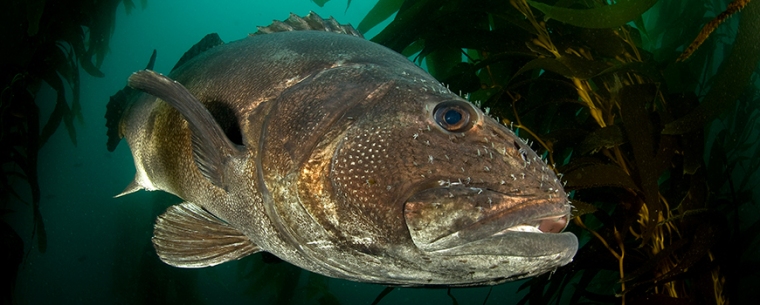A new study by Scripps Institution of Oceanography, UC San Diego, marine biologist Philip Hastings and colleagues reveals that over half of the fish species found in California waters have been found in the immediate vicinity of the La Jolla neighborhood of San Diego.
The research team used specimens collected over several decades to document the diversity of fishes in and around the region’s marine protected areas (MPAs) and diver surveys to quantify the abundance of kelp forest fishes.
“We were surprised to learn that, based on specimens archived in the Scripps Marine Vertebrate Collection, 265 species of fishes representing 95 families have been collected in the immediate vicinity of La Jolla and its marine protected areas,” said Hastings. “That’s over half of the entire marine ichthyofauna recorded from California waters.”
The study, “Fishes of Marine Protected Areas Near La Jolla, California,” published in the Bulletin of the Southern California Academy of Sciences in December 2014, was funded by California Sea Grant and the Link Family Foundation. The diversity of marine life in the La Jolla area documented by this and other studies suggests that though small geographically, individual marine protected areas play an important role in preserving marine ecosystems statewide.
Hastings, the curator of the Marine Vertebrate Collection, Collection Manager H.J. Walker, and former Scripps PhD students Matt Craig, Brad Erisman, and John Hyde, used archived collection data to examine the diversity of fishes in La Jolla, from Torrey Pines to Tourmaline Beach within 10 kilometers (6.2 miles) of shore. The study documented 113 common species found 10 or more times, 83 uncommon species collected three to nine times, and 68 rare species recorded only once or twice. Noteworthy species include the White Shark, Ocean Sunfish, Giant Seabass, and 35 species of rockfishes in the genus Sebastes.
Habitats near the La Jolla coastline include sandy and muddy bottoms, sea grass beds, rocky reefs, kelp forests, deep submarine canyons, and open ocean waters. This rich diversity of habitats, and the organisms it supports, inspired the establishment of local marine protected areas (MPAs) as early as the 1970s and their recent expansion as a part of the California coastal reserve system. Current MPAs include the Matlahuayl State Marine Reserve (formerly called the San Diego-La Jolla Ecological Reserve) from La Jolla Cove to Scripps Pier, the San Diego-Scripps Coastal State Marine Conservation Area north of Scripps Pier, and off the southern end of the La Jolla peninsula, the South La Jolla State Marine Reserve, and the South La Jolla State Marine Conservation Area.
Natural history collections are an important part of research institutions such as Scripps. The Marine Vertebrate Collection, one of five oceanographic collections at Scripps, started in the early 1900s when Percy Barnhart, the collection’s first curator, archived a modest number of specimens from the San Diego area. World-renowned ichthyologist Carl Hubbs arrived at Scripps in 1944 with plans to expand the collection. In his first two years, Hubbs made more than 200 collections of fishes from La Jolla and within a decade had amassed over 500 collections from the immediate vicinity. By 1964, Hubbs and colleagues had documented 90 percent of the 265 species known to inhabit the La Jolla area.
Collection-building at Scripps continues. This includes the archiving of specimens from other regions, rare species that occasionally appear in the area, and “vouchers” (specimens that serve as a basis of study and are retained as a reference) for research on the biology of local fishes. In addition, the growing marine vertebrate tissue collection established by Walker in 1993 provides a resource for genetic studies on fishes.
In the paper, the authors note that the “nearshore environment of La Jolla is especially important within the context of marine conservation because it houses a network of MPAs of varying size and age and with varying levels of use restrictions.” The La Jolla reserves are among the southernmost MPAs in California.
In addition to providing an inventory of species found in a certain area, natural history collections provide insight into faunal changes such as those that may occur because of coastal development, climate change, or the appearance of invasive species. However, natural history collections generally are unable to reveal changes in abundance because they often lack repeated quantitative samples. To address this, Hastings and colleagues added a quantitative component to their study. Divers counted conspicuous fish along transects at four different depths at La Jolla Cove and at nearby Boomers reef, which has similar rocky, algal turf and kelp forest habitats but is outside of the protected area. At the end of four years they had completed 500 transects and counted well over 90,000 fishes representing 51 species, or about a third of the species recorded in the area. This study highlights the complementary role natural history collections have with traditional survey methods.
“While diver-based surveys do an excellent job of documenting short-term abundances within diving depths, natural history collections provide data from longer time spans and deeper waters, and are better at documenting cryptic and rare species often not seen by divers,” said Hastings.
This article was written for Explorations Now
Photo Credit: Octavio Aburto


Nice job, very interesting!
LikeLike